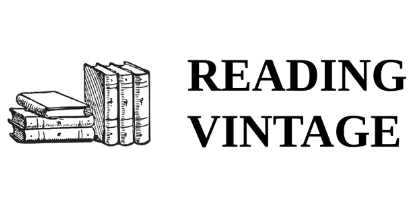November 20, 2024
Historical bookends offer a glimpse into past cultures, art movements, and technologies. They aren’t just functional items; they are valuable collectibles that reflect the evolving designs and materials used over centuries.
This guide explores the origins, famous examples, and the diverse materials used in historical bookends, providing insights for collectors and enthusiasts alike.

The story of bookends begins in ancient civilizations, where the need for historical bookends to support reading materials was first recognized. In ancient Egypt, basic structures were crafted to hold papyrus scrolls upright, marking the earliest form of book support. Similarly, in ancient Mesopotamia, wooden boxes were designed to keep clay tablets organized and accessible.
As we move forward, the Middle Ages brought significant developments in book support technologies. Book clasps, for instance, protected precious manuscripts and kept them securely closed. These clasps were essential in maintaining the integrity of books that were often hand-copied and highly valuable.
Chained book supports were introduced in monastic libraries to prevent theft and ensure that books remained in place. This innovation underscored a growing need for more secure and organized book storage solutions, reflecting the increasing value placed on knowledge and written works during this period.

Throughout history, certain bookends have gained fame not only for their functionality but also for their artistic merit. They often serve as historical bookends that mark significant periods. The Art Deco period, for example, produced notable antique bookends characterized by bold geometric designs and luxurious materials such as chrome and marble. Collectors highly sought after these pieces for their distinctive style and craftsmanship.
During the Renaissance, bookends evolved into ornate objects that combined decorative elements with functional stability. These bookends often featured intricate carvings and were made from high-quality materials, reflecting the artistic sensibilities of the time.
Famous antique bookends are prized for their ability to capture the essence of the eras in which they were created. They showcase a blend of historical significance and artistic design, making them valuable collectibles. Their unique designs and the stories they tell make them a fascinating addition to any collection.
The materials used to create historical bookends are as diverse as their designs. From durable metals like bronze to luxurious stones such as marble, alabaster, and onyx, each material brings its own aesthetic and historical significance to these objects.
In the following subsections, we will explore the distinctive qualities and historical uses of bronze, marble, alabaster, and onyx in creating bookends.
Materials Used
The materials of historical bookends greatly influence their aesthetic and value. The table below highlights common materials, their characteristics, periods of popularity, and notable examples to assist collectors and enthusiasts.
| Material | Characteristics | Historical Periods of Use | Notable Examples |
|---|---|---|---|
| Bronze | Durable, ornamental | Ancient to Modern | Art Deco designs |
| Marble | Luxurious, elegant | Renaissance, Classical | Intricate carvings |
| Alabaster | Soft, translucent | Medieval to Renaissance | Detailed sculptures |
| Onyx | Striking patterns | Art Deco | Geometric styles |
| Wood | Versatile, common | Various periods | Rustic designs |

Bronze, a copper and tin alloy, has been popular for historical bookends due to its durability and ornamental qualities. Unlike iron, bronze is less brittle, making it ideal for crafting intricate designs that stand the test of time. This durability ensures that bronze bookends can support heavy volumes without losing their structural integrity.
Bronze bookends’ ornamental appeal is another reason for their popularity among collectors. The detailed craftsmanship and decorative motifs often found in bronze bookends reflect the cultural trends of the times they were made. These qualities make bronze bookends functional and aesthetically pleasing additions to any bookshelf.
Marble and alabaster have long been celebrated for their luxurious appearance and the skill required to work with them. They often serve as historical bookends in various collections. Artists have used marble and alabaster to create finely detailed bookends that exude elegance and sophistication. The natural beauty of these stones, combined with expert craftsmanship, results in functional and decorative pieces.
These materials were particularly favored in certain historical periods due to their opulent look and the intricate carving they allowed. Marble and alabaster bookends are prized by collectors for elevating the aesthetic of any bookshelf, making them timeless treasures in the world of antique bookends.
Onyx bookends, often considered historical bookends, are renowned for their striking color patterns and translucence, making them visually captivating pieces. The unique banding and rich hues of onyx create bookends that stand out as decorative elements in any setting. With its varied and opulent appearance, the natural beauty of onyx has made it a popular choice for bookends during periods that value distinctive aesthetics.
The peak of onyx bookends’ popularity coincided with times when opulence and dramatic flair were in vogue, such as the Art Deco period. Today’s collectors continue to seek out onyx bookends for their unique visual appeal and the craftsmanship in shaping this beautiful stone.

Timeline of Bookend Styles Through the Ages
The evolution of bookend styles reflects significant historical and cultural shifts. The table below outlines key periods and their distinctive bookend designs.
| Period | Style Name | Design Features | Common Materials | Cultural Significance |
|---|---|---|---|---|
| Ancient Civilizations | Early Supports | Functional, simplistic | Wood, stone | Beginnings of book organization |
| Middle Ages | Chained Supports | Secure, functional | Metal | Protection of valuable manuscripts |
| Renaissance | Ornate Designs | Intricate carvings, artistic flair | Marble, alabaster | Reflects artistic revival |
| Industrial Revolution | Mass-Produced | Functional to decorative | Metal, wood | Accessibility to wider audience |
| Art Deco | Geometric Flair | Bold shapes, luxury materials | Bronze, onyx | Emphasis on modernity and opulence |
Historical bookends have evolved significantly over the centuries, reflecting broader cultural and artistic trends. During the Renaissance, bookends became ornate pieces made from marble materials, emphasizing stability and aesthetic appeal. These bookends often featured intricate carvings and reflected the artistic sensibilities of the time.
The Industrial Revolution marked a significant shift, allowing for the mass production of bookends. This made them more affordable and accessible to a wider audience. Styles during this period ranged from simple and functional to more decorative designs, reflecting the diverse tastes of the growing middle class.
In the 20th century, the Art Deco period brought a dramatic and artistic flair to bookend designs. With their rich colors and unique patterns, Onyx bookends became highly sought after. Modern bookends continue to evolve, showcasing a range of styles from minimalistic to eclectic, highlighting innovation in materials and aesthetics.

As libraries expanded during the 15th and 16th centuries, the need for historical bookends became more apparent. With the transition from lecterns to bookshelves, bookends were essential to keep books upright and organized. This shift marked the beginning of bookends as indispensable tools in any library.
In the mid-19th century, books became more available and affordable, which, in turn, increased the demand for bookends. These objects helped keep books organized while adding a decorative touch to study spaces, often reflecting the owner’s personal taste and room decor.
Effective bookends must match the weight and height of the books they support. Selecting the right ones ensures they offer adequate support and enhance the collection’s aesthetic.

Factors to Consider When Collecting Antique Bookends
When collecting antique bookends, understanding what influences their value and appeal is essential. The table below highlights key factors such as condition, materials, craftsmanship, provenance, and authenticity to help you make informed decisions for your collection.
| Factor | Description | Impact on Value | Tips |
|---|---|---|---|
| Condition | Presence of wear, damage, or restoration | High | Inspect for cracks, repairs, or alterations |
| Materials | Quality and type of materials used | Significant | Prefer original, high-quality materials |
| Craftsmanship | Level of detail and skill in creation | Significant | Look for intricate and well-executed designs |
| Provenance | Documented history of ownership | High | Seek items with certificates or clear lineage |
| Authenticity | Verification of origin and era | Critical | Check for maker’s marks and historical features |
Collecting historical bookends has become popular, driven by their unique designs and the historical context they represent. When evaluating antique bookends, collectors should prioritize the piece’s condition, as signs of wear, damage, or restoration can significantly affect its value.
The quality of materials and craftsmanship significantly influences the value of antique bookends. Provenance, or the history of ownership, can also boost a piece’s desirability. Well-documented items, particularly those associated with notable designers or historical events, are more valuable.
Collectors can find unique bookends at estate sales, auctions, and antique shops. Authenticating these items involves checking materials, craftsmanship, and design features from specific historical periods. Manufacturer markings or stamps may also reveal a piece’s authenticity.
Preserving historical bookends requires a climate-controlled environment to avoid damage from extreme temperatures and humidity. Regular cleaning with soft cloths removes dust and prevents scratches or tarnish.
Display antique bookends on sturdy shelves away from direct sunlight to prevent fading and damage. Acrylic risers or stands can elevate the items, enhancing visibility and showcasing their unique designs.
Antique bookends are valuable collectibles that need proper care to maintain their condition. Following these preservation and display tips ensures they remain beautiful and intact for years.

Historical bookends are a fascinating blend of functionality and artistry. From their origins in ancient civilizations to their evolution through various historical periods, these objects have played a crucial role in organizing and beautifying book collections.
By understanding antique bookends’ materials, styles, and historical significance, collectors can make informed choices and appreciate the rich heritage these items represent. Whether you are an avid collector or a casual enthusiast, the journey of exploring and preserving antique bookends is both rewarding and enriching.
a. Some of the most famous historical bookends include Art Deco styles featuring bold geometric designs and Renaissance bookends known for their intricate carvings. These pieces often serve as both functional objects and decorative art.
a. Historical bookends are commonly made from bronze, marble, alabaster, and onyx. These materials offer durability and aesthetic appeal and are valued for their elegance and craftsmanship.
a. To authenticate historical bookends, carefully examine the materials, craftsmanship, and design features typical of their era, while also looking for any manufacturer markings. This thorough analysis will help establish their authenticity.
a. When collecting historical bookends, it is essential to assess their condition, the quality of materials and craftsmanship, as well as their provenance and authenticity. These factors will greatly influence the value and enjoyment of your collection.
a. To preserve your historical bookends, maintain a climate-controlled environment, clean them regularly with soft cloths, and ensure they are displayed away from direct sunlight. Following these practices will help maintain their condition and value.
 About the Author Pam of Reading Vintage
About the Author Pam of Reading Vintage
Pam is the founder and owner of Reading Vintage, a home-based business nestled in the Great Lakes Bay Region of Michigan. Passionate about history, literature, and unique collectibles, she specializes in curating and selling quality vintage books and literary treasures.
Comments will be approved before showing up.

